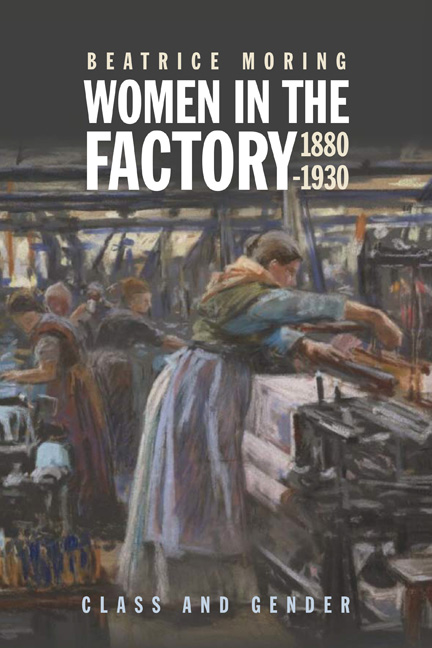Book contents
- Frontmatter
- Contents
- List of Illustrations
- Introduction – Why Women in the Factory?
- 1 Gender And Class – Male Unions, Political Movements and the Female Vote
- 2 Women in Industry: Work, Sectors, Age and Marital Status
- 3 Women, Earnings and the Household – Why the Factory?
- 4 Accidents, Compensation, Laws and Inspection
- 5 Middle Class Girls, Education and Entry into the Civil Service
- 6 The Female Factory Inspectors – How, Why and Who
- 7 Factory Inspection Activity
- 8 Class, Gender and Communication
- Conclusion
- Appendix 1 The Right for Women to Vote in National Elections
- Appendix 2 Women in the Workforce
- Appendix 3 Women, Work, Earnings and Family
- Appendix 4 Accidents, Workplace Acts and Regulations
- Appendix 5 Education
- Appendix 6 Female Inspectors
- Appendix 7 Inspectors, Activity
- Appendix 8 The Female Inspectors and Society
- Bibliography
- Index
Conclusion
Published online by Cambridge University Press: 09 May 2024
- Frontmatter
- Contents
- List of Illustrations
- Introduction – Why Women in the Factory?
- 1 Gender And Class – Male Unions, Political Movements and the Female Vote
- 2 Women in Industry: Work, Sectors, Age and Marital Status
- 3 Women, Earnings and the Household – Why the Factory?
- 4 Accidents, Compensation, Laws and Inspection
- 5 Middle Class Girls, Education and Entry into the Civil Service
- 6 The Female Factory Inspectors – How, Why and Who
- 7 Factory Inspection Activity
- 8 Class, Gender and Communication
- Conclusion
- Appendix 1 The Right for Women to Vote in National Elections
- Appendix 2 Women in the Workforce
- Appendix 3 Women, Work, Earnings and Family
- Appendix 4 Accidents, Workplace Acts and Regulations
- Appendix 5 Education
- Appendix 6 Female Inspectors
- Appendix 7 Inspectors, Activity
- Appendix 8 The Female Inspectors and Society
- Bibliography
- Index
Summary
Contemporary scholarship still has a tendency to view female work in industry not as a sizable contribution to economic history but as a social problem. The female worker has not been considered an independent economically active person, but a victim of a defective system. By recreating women of the past into victims, whether of the capitalist system or patriarchal society, we take away their agency. We refuse to allow them to be thinking persons who made rational choices. In doing so, historians play into the hands of the male view of the past. If working women were just victims, they can be relegated to a corner of social history.
Once upon a time, before manufacturing in Europe became history, the author of this book had the opportunity to visit a veneer factory. We were taken through various rooms, ending up in one with only female workers. The noise was incredible. The women cleaned out branches and replaced them with plugs. Two women opposite one another banged away with mallets at sheets of veneer spat out by a machine. We were told that only women could do such work fast enough and without hitting each-others’ hands.
The Finnish factory inspector tells us in her report form 1904 how skill and specialisation was not outside the female scope, when an effort was made to replace women in the factories dealing with small items of wood, the male workers were found to be far less effective. On the other hand, the inspector acknowledges the problem of female mobility in certain industries, resulting in lower earnings, because of employment history. In this connection, she points out that the reason for women leaving was the option of earning more in the summer loading and unloading ships.1 The key piece of information here is that women looked for opportunities to earn and if staying in the factory did not provide chances of advancement, you could just as well look for employment where more money was offered. As female earnings were low, short-term solutions became more likely. Slim chances of advancement also promoted less interest in unionisation. On the other hand, we have evidence that women were not lethargically hanging on to any job but actively looking for opportunities and better pay.
- Type
- Chapter
- Information
- Women in the Factory, 1880-1930Class and Gender, pp. 226 - 232Publisher: Boydell & BrewerPrint publication year: 2024



